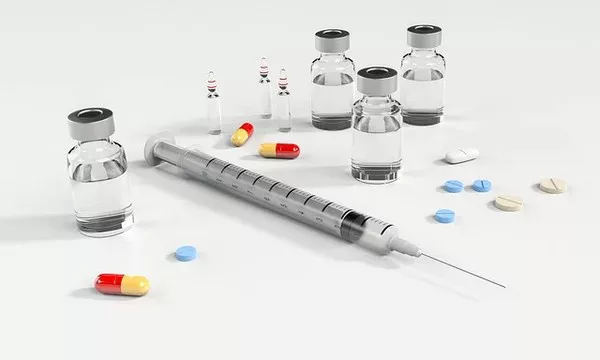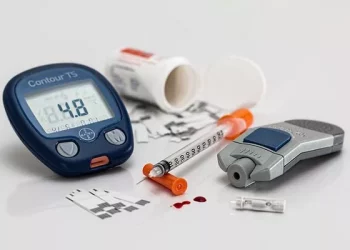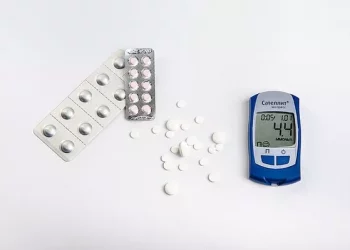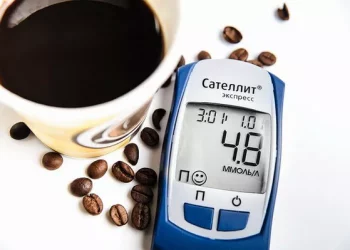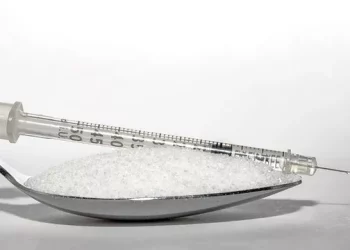Low blood sugar, also known as hypoglycemia, is a common concern for people with diabetes. It occurs when the glucose level in the blood falls below the normal range, typically under 70 mg/dL (3.9 mmol/L), and it can be caused by various factors such as skipping meals, taking too much insulin, or engaging in vigorous physical activity without proper carbohydrate intake. Recognizing the symptoms of low blood sugar is critical for individuals with diabetes because if left untreated, hypoglycemia can lead to serious complications, including confusion, seizures, and even unconsciousness. In this article, we will explore how to identify the signs of low blood sugar, the possible causes of hypoglycemia, and the steps you can take to prevent and treat this condition.
What Is Low Blood Sugar (Hypoglycemia)?
Blood glucose, or blood sugar, is the primary source of energy for the body’s cells. In individuals with diabetes, the body struggles to regulate blood sugar levels effectively due to insufficient insulin production (type 1 diabetes) or insulin resistance (type 2 diabetes). For most people, normal blood sugar levels range between 70 mg/dL and 140 mg/dL (3.9 to 7.8 mmol/L), depending on the time of day and food intake.
Low blood sugar occurs when glucose levels fall below 70 mg/dL (3.9 mmol/L). This condition is most commonly associated with diabetes treatment, especially in those who take insulin or other medications that lower blood sugar. However, hypoglycemia can also happen in individuals without diabetes, although it is less common.
Common Symptoms of Low Blood Sugar
Recognizing the symptoms of hypoglycemia is essential for individuals with diabetes. The body reacts to low blood sugar in various ways, and the symptoms can differ from person to person. Some individuals may experience only mild symptoms, while others may have more severe reactions. Common signs of low blood sugar include:
1. Sweating and Shakiness
One of the most noticeable symptoms of low blood sugar is excessive sweating, which occurs as the body tries to counteract the drop in glucose levels. Shakiness or trembling is also common, especially in the hands. These symptoms happen as the body releases adrenaline in response to the hypoglycemia, initiating the “fight or flight” response.
2. Hunger and Nausea
When blood sugar levels drop, the body signals the brain to increase food intake. This often leads to intense hunger, which can sometimes be accompanied by nausea. The body is essentially urging you to consume food to restore normal glucose levels.
3. Confusion and Difficulty Concentrating
Low blood sugar can affect the brain’s ability to function normally. One of the first signs of cognitive dysfunction is confusion. Individuals may find it difficult to concentrate, make decisions, or recall information. This is due to the brain’s reliance on glucose as its primary energy source.
4. Dizziness or Lightheadedness
Dizziness is another common symptom of hypoglycemia. As glucose levels drop, blood flow to the brain may be reduced, leading to feelings of lightheadedness or vertigo. This can make it difficult for individuals to stand or walk without support.
5. Fatigue or Weakness
Low blood sugar causes the body to become fatigued because the muscles and organs are not receiving the energy they need to function. This can result in extreme tiredness, even after adequate rest.
6. Irritability or Mood Swings
Hypoglycemia can trigger irritability and mood swings. Individuals may feel anxious, angry, or unusually emotional. This is another result of the brain’s reduced ability to function normally due to insufficient glucose.
7. Rapid Heartbeat or Palpitations
When blood sugar drops, the body releases adrenaline (epinephrine) as part of the “fight or flight” response. This causes an increase in heart rate, leading to palpitations or a racing heart.
8. Blurry Vision
Low blood sugar can affect the functioning of the eyes. In some cases, individuals may experience blurry vision or double vision due to the brain’s insufficient access to glucose.
9. Tingling or Numbness
In severe cases of hypoglycemia, some people may experience tingling or numbness, especially in the lips, tongue, or fingers. This can occur as a result of the body’s stress response, which affects nerve function.
How Low Blood Sugar Affects the Body
Blood sugar is a critical energy source for the body, and low levels can have significant consequences. When glucose levels drop, the body releases stress hormones, including adrenaline and cortisol, to raise blood sugar. These hormones can lead to the symptoms mentioned earlier, such as sweating, shaking, and a rapid heartbeat.
As blood sugar continues to drop, the brain’s function becomes increasingly impaired. The brain requires a steady supply of glucose to operate effectively, and low levels can cause confusion, dizziness, and difficulty concentrating. If left untreated, hypoglycemia can lead to more severe neurological effects, such as seizures, loss of consciousness, or even death.
Who Is at Risk for Low Blood Sugar?
While anyone can experience low blood sugar, certain individuals are at greater risk, particularly those with diabetes. Some factors that increase the risk of hypoglycemia include:
1. Type 1 Diabetes
People with type 1 diabetes, who rely on insulin injections or an insulin pump to control their blood sugar, are particularly vulnerable to hypoglycemia. This is because insulin therapy can sometimes lead to insulin doses that are too high, resulting in a drop in blood glucose levels. Additionally, people with type 1 diabetes may experience more fluctuations in blood sugar due to the unpredictable nature of the condition.
2. Type 2 Diabetes
Individuals with type 2 diabetes who are on insulin or other blood sugar-lowering medications are also at risk for hypoglycemia. However, people with type 2 diabetes who manage their blood sugar with oral medications or lifestyle changes may not experience hypoglycemia as frequently.
3. Older Adults
Older adults, especially those with diabetes, are at increased risk of hypoglycemia. Age-related changes in metabolism, kidney function, and hormone levels can make it more difficult for the body to regulate blood sugar. Additionally, older individuals may not recognize the symptoms of hypoglycemia as easily, which increases the risk of severe episodes.
4. Pregnant Women
Pregnancy can affect the body’s glucose regulation. During pregnancy, the body produces hormones that can interfere with insulin’s effectiveness, leading to fluctuations in blood sugar levels. Pregnant women, especially those with gestational diabetes, should be vigilant about monitoring their blood sugar levels to avoid episodes of hypoglycemia.
5. Athletes and Active Individuals
People who engage in strenuous physical activity may experience low blood sugar if they do not properly adjust their carbohydrate intake or insulin doses. Exercise increases the body’s use of glucose, and without sufficient fuel, blood sugar can drop. It is essential for active individuals to monitor their blood sugar closely and consume carbohydrates as needed before, during, and after exercise.
Causes of Low Blood Sugar in People with Diabetes
Hypoglycemia in individuals with diabetes can occur for various reasons. Common causes of low blood sugar include:
1. Taking Too Much Insulin or Diabetes Medications
Insulin is a powerful hormone that helps lower blood sugar. However, taking too much insulin or certain other diabetes medications (such as sulfonylureas) can cause blood sugar levels to drop too low. It’s essential to follow a prescribed insulin regimen and adjust doses based on food intake, physical activity, and other factors.
2. Skipping or Delaying Meals
When a person with diabetes skips a meal or eats less than usual, there may not be enough food in the bloodstream to balance the insulin or medication taken. This can cause a rapid drop in blood sugar.
3. Increased Physical Activity
Exercise uses glucose as fuel, and when activity is more intense or prolonged than usual, the body may deplete its glucose stores. If carbohydrates are not consumed before or after exercise, blood sugar can drop to dangerously low levels.
4. Alcohol Consumption
Drinking alcohol can interfere with the liver’s ability to release glucose into the bloodstream. This effect can last for several hours after drinking, increasing the risk of hypoglycemia, particularly in people who use insulin or other medications that lower blood sugar.
How to Monitor Blood Sugar Levels
Monitoring blood sugar levels regularly is the most effective way to prevent and manage low blood sugar. There are several methods available for checking blood glucose:
1. Blood Glucose Meters
Blood glucose meters are portable devices that allow individuals to check their blood sugar levels at home. A small drop of blood is obtained by pricking the fingertip with a lancet, and the meter displays the blood sugar level within a few seconds. It is recommended to check blood glucose levels at various times during the day, including before and after meals, during exercise, and at bedtime.
2. Continuous Glucose Monitors (CGM)
Continuous glucose monitors (CGMs) are devices that provide real-time readings of blood sugar levels throughout the day and night. A small sensor is inserted under the skin, typically on the abdomen or arm, and it measures glucose levels in the interstitial fluid. CGMs can alert individuals to low or high blood sugar levels, allowing for prompt action to be taken.
How to Treat Low Blood Sugar
If you experience symptoms of low blood sugar, it’s crucial to take quick action. The American Diabetes Association recommends the “15-15 rule” for treating mild hypoglycemia:
Consume 15 grams of fast-acting carbohydrates. This could include:
- 3-4 glucose tablets
- 1/2 cup of fruit juice or regular soda
- 1 tablespoon of honey or syrup
Wait for 15 minutes and then check your blood sugar. If it is still below 70 mg/dL (3.9 mmol/L), consume another 15 grams of carbohydrates and check again in 15 minutes.
For severe hypoglycemia, when a person is unable to swallow or is unconscious, a glucagon injection or glucose gel may be needed. It’s essential to have a plan in place with family members, friends, or caregivers to treat severe low blood sugar.
Prevention of Low Blood Sugar
Preventing hypoglycemia involves a combination of lifestyle adjustments and medical management:
Monitor blood sugar regularly to identify patterns and avoid unexpected drops.
Eat balanced meals regularly and ensure that carbohydrate intake matches insulin or medication doses.
Adjust medication doses based on physical activity and food intake, as recommended by a healthcare provider.
Carry fast-acting carbohydrates at all times to treat hypoglycemia promptly.
Consult with a healthcare provider regularly to adjust treatment plans as needed.
Conclusion
Low blood sugar is a common but manageable condition for individuals with diabetes. Recognizing the symptoms of hypoglycemia and taking immediate action can prevent severe complications. Regular monitoring, proper meal planning, medication adjustments, and understanding the underlying causes of low blood sugar are crucial for effective management. By following these strategies, individuals with diabetes can reduce their risk of hypoglycemia and maintain stable blood sugar levels, leading to a healthier and more balanced life.
Related topics:
What Constitutes a Good Blood Sugar Level

